Crowd control marshals and service ambassadors who guide the morning and evening peak crowds at MRT stations — we are so used to seeing them that many of us hardly pay them a second look.
But the crowd control efforts of Stadium MRT station staff have earned them commendation from regional attendees, after the six nights that the Eras Tour shows played in early March.
The experience was so positive that Singaporeans and foreigners were inspired to hand out glowing reviews for the public transport operator on Facebook.
How exactly do station staff manage huge crowds at events like the Eras Tour?
For starters, a large-scale event requires more hands on deck, so SMRT beefed up the manpower at Stadium MRT station by four times in anticipation of managing 52,000 concertgoers each show night.
When station staff are on crowd control duty, they do more than just direct commuters.
A lot of the work actually goes unnoticed by the average commuter.
Look out for commuters in distress
Take a concert, for instance, where many attendees stand, dance, and go without food or water for hours.
Staff like Nadarajan S, a senior station manager deployed on the Circle Lines, would look out for commuters who look unwell or appear to be in distress, like they're about to faint.
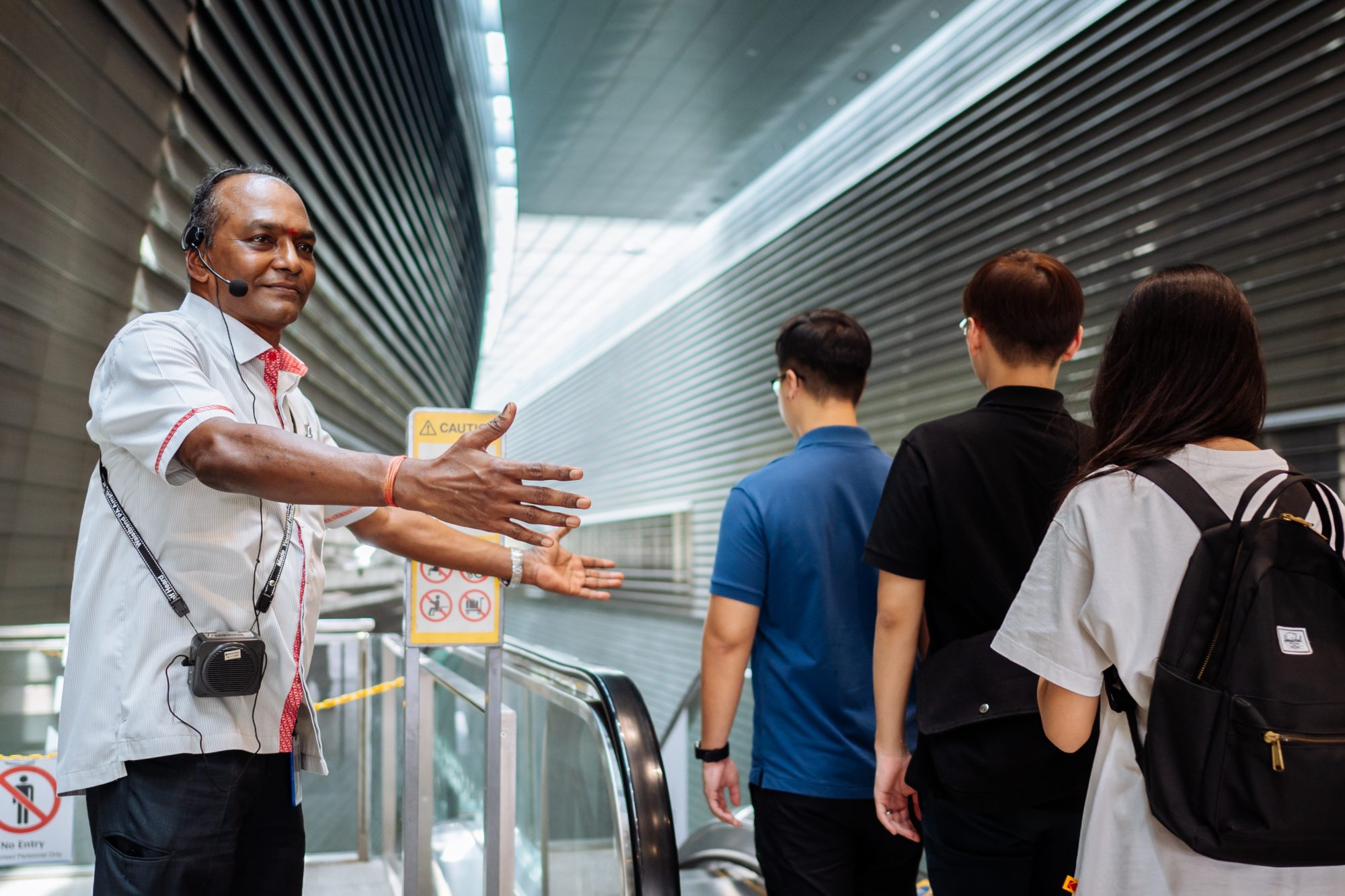 SMRT Senior Station Manager Nadarajan S directing the crowd at Stadium MRT station. Photo courtesy of SMRT.
SMRT Senior Station Manager Nadarajan S directing the crowd at Stadium MRT station. Photo courtesy of SMRT.
The 59-year-old has encountered such cases before.
"On those occasions, I brought them to our SMRT WeCare room for them to rest and offered a snack or drink to replenish their energy.
In more severe cases, we activated the ambulance to provide medical assistance."
Look out for commuters who need assistance
Staff also look out for commuters who require assistance, for instance, foreigners who are unfamiliar with the local public transport system.
They typically require help in matters like ticketing, said Nadarajan.
 While directing the crowds, SMRT Senior Station Manager Nadarajan S looks out for commuters who require assistance. Photo courtesy of SMRT.
While directing the crowds, SMRT Senior Station Manager Nadarajan S looks out for commuters who require assistance. Photo courtesy of SMRT.
Some arrive at the National Stadium via taxi, but cannot get one to bring them back after the event. When they wander into Stadium MRT station, staff are trained to spot them and assess if they require help.
"No matter how busy we are, we will always take the time to assist them as we want to leave them with [a] good impression of Singapore’s public transport system," said Nadarajan.
Then there are the commuters who are differently-abled.
In a crowded situation, staff look out for commuters in wheelchairs and guide them to the priority-access gantry.
 This concertgoer praised Stadium MRT station staff for the orderly manner in which they guided the crowds. Screengrab from SMRT/Facebook.
This concertgoer praised Stadium MRT station staff for the orderly manner in which they guided the crowds. Screengrab from SMRT/Facebook.
Comprehensive preparation
The work starts way before the actual event day and typically involves other stakeholders too.
Ang Chee Keong, a service operations manager on the Circle Line, was in charge of ground operations at Stadium MRT station on all six Eras Tour show nights.
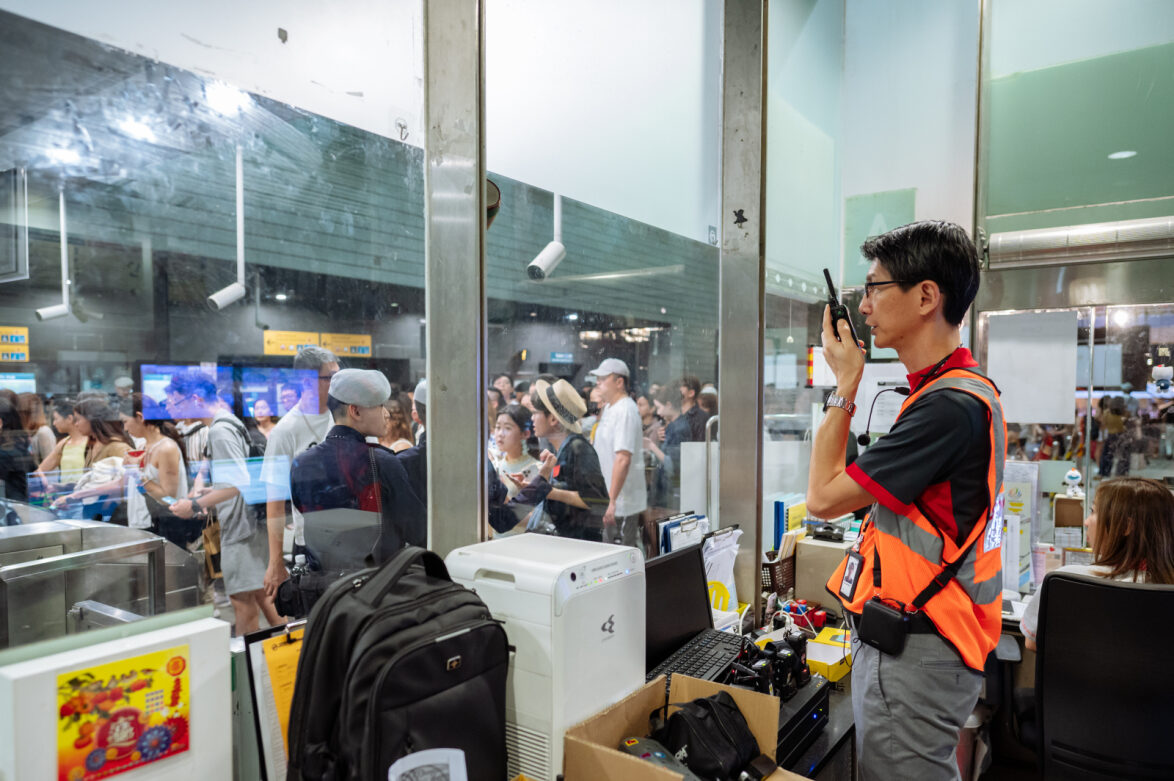 SMRT Service Operations Manager Ang Chee Keong liaising with staff at Stadium MRT station. Photo courtesy of SMRT.
SMRT Service Operations Manager Ang Chee Keong liaising with staff at Stadium MRT station. Photo courtesy of SMRT.
During the planning phase, Ang, along with other stakeholders like the Singapore Sports Hub, held meetings and site recces regularly.
Together, they developed a comprehensive set of crowd management plans.
They even covered a range of unforeseen situations, including wet weather (which turned out to be quite useful).
Assigning staff to critical points in the station
Each show night, Ang conducted a safety briefing for the crowd control marshals, station managers, and service ambassadors at Stadium MRT station.
He then deployed them to critical locations, like escalator landings and batch release points.
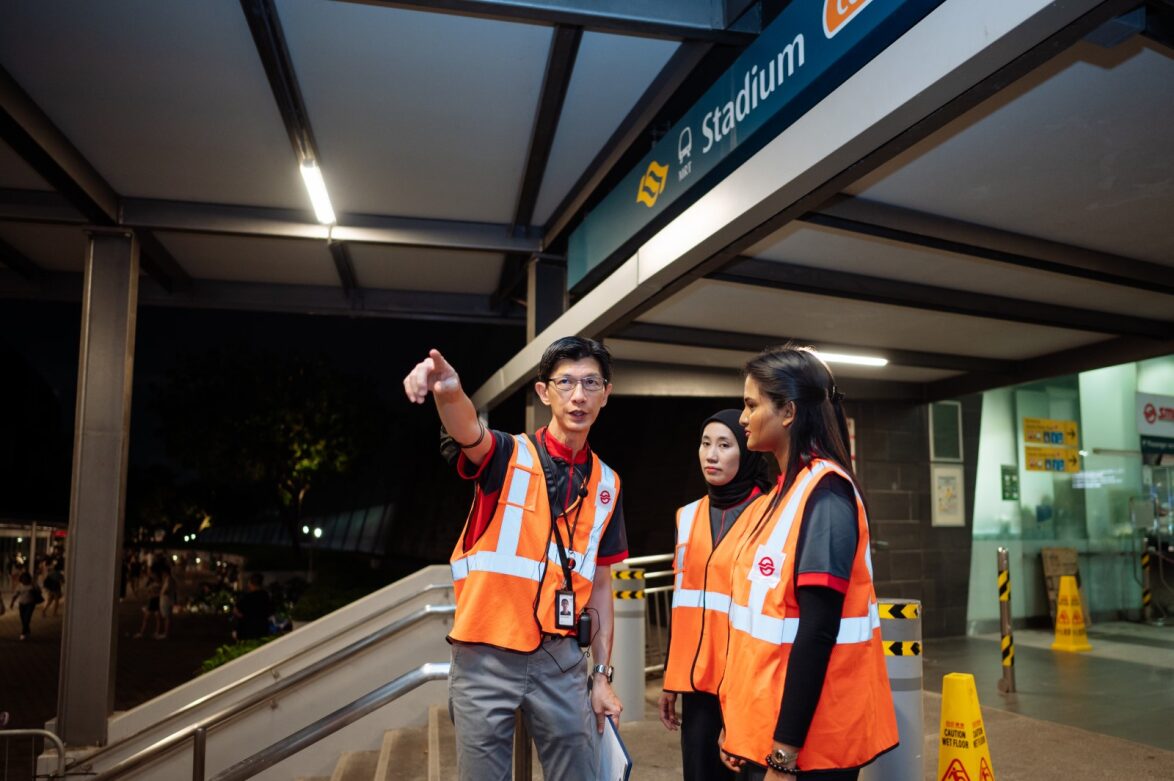 SMRT Service Operations Manager Ang Chee Keong deploying staff to their respective locations. Photo courtesy of SMRT.
SMRT Service Operations Manager Ang Chee Keong deploying staff to their respective locations. Photo courtesy of SMRT.
Batch release refers to a crowd control technique where commuters are asked to wait at an entry point (such as the fare gate area or station entrance) until the earlier batch of commuters gets on an arriving train and clears the platform.
Commuters are guided by staff to move through the station, from entrance to platform, in batches.
This prevents overcrowding which can lead to severe, and potentially deadly consequences like crowd crush.
Ultimately, crowd control is all about safety. Ang said:
"To us, the safety of our commuters is the most important aspect we look out for when we carry out crowd control duties."
Thankfully, most commuters understand this.
"We appreciate that the majority of event attendees are very cooperative when we have to direct them in moving and queuing for the next train," said Nadarajan.
Practice makes perfect
Perhaps there is a key factor aside from having well-designed plans: practice.
Ever since Covid-19 restrictions were stood down, the National Stadium has been playing host to a variety of large scale events, from concerts to football matches.
 Managing crowds from other National Stadium events allowed Stadium MRT staff to practise and improve their crowd control operations. Photo courtesy of SMRT.
Managing crowds from other National Stadium events allowed Stadium MRT staff to practise and improve their crowd control operations. Photo courtesy of SMRT.
Dispersing crowds from these events allowed staff from Stadium MRT station to practise and refine their crowd control plans.
"All these experiences help us to improve our plans for the next event. For such full capacity events at National Stadium with more than 50,000 crowd, we are usually able to clear the crowd in our station within an hour."
Trains ready to go
Aside from crowd control on the ground, SMRT increased the train frequency on the Circle Line.
This shortened the waiting time for commuters at the station, and helped to clear the platforms faster, allowing batches of concertgoers to move through the station more quickly.
As part of SMRT’s contingency plans, the public transport operator also had empty trains on standby, ready to be activated for crowd dispersal, if the need arose.
Praised for providing positive public transport experience
It's no wonder their work has won praise from Eras Tour concertgoers who have been effusive in their appreciation.
Many highlighted the smooth transportation experience to and from the National Stadium while others pointed out that the excellent work by station staff served to make the entire experience — and not just the concert itself — a positive one.
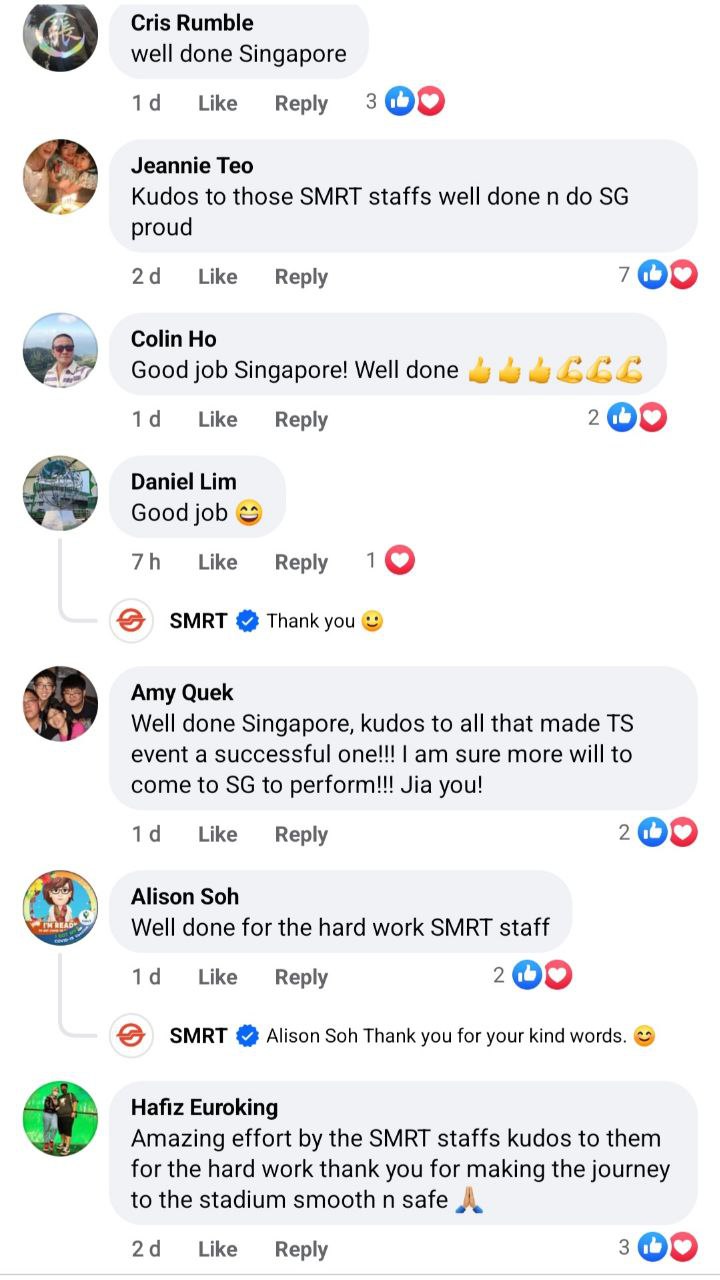
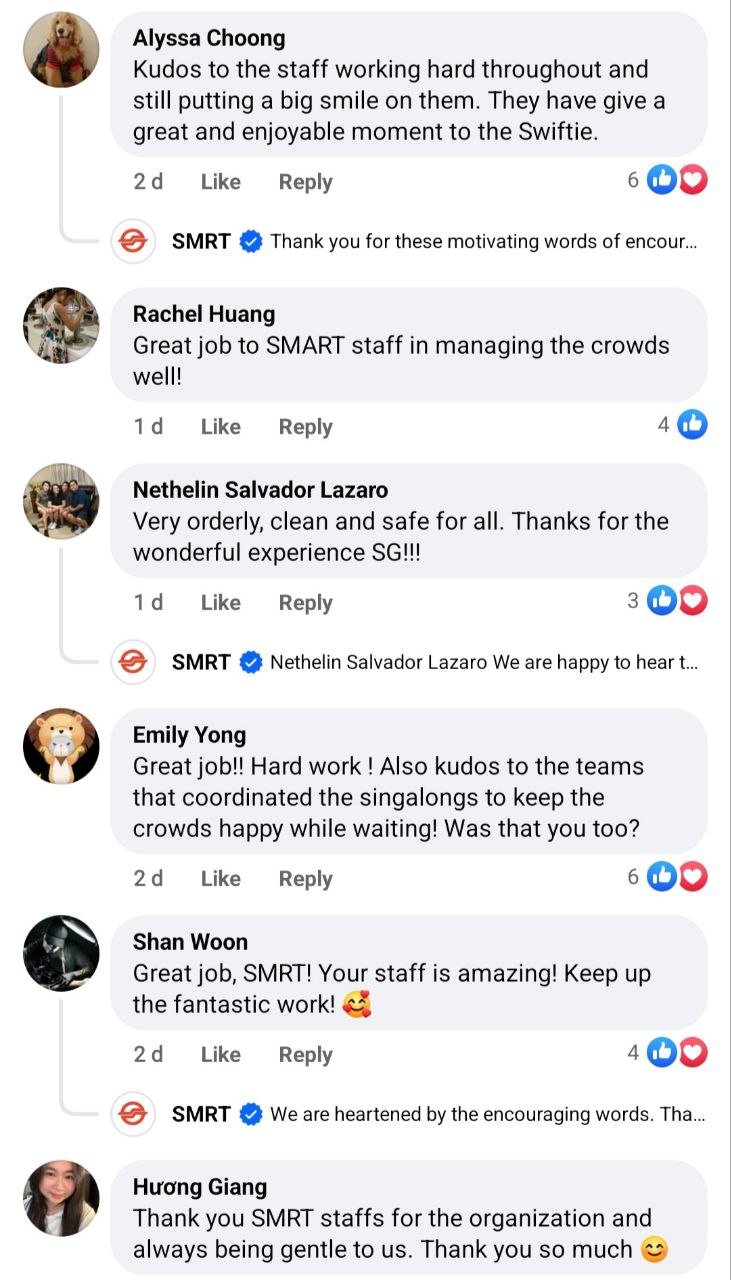


This concertgoer who was separated their family members praised a station staff for going above and beyond their duty:
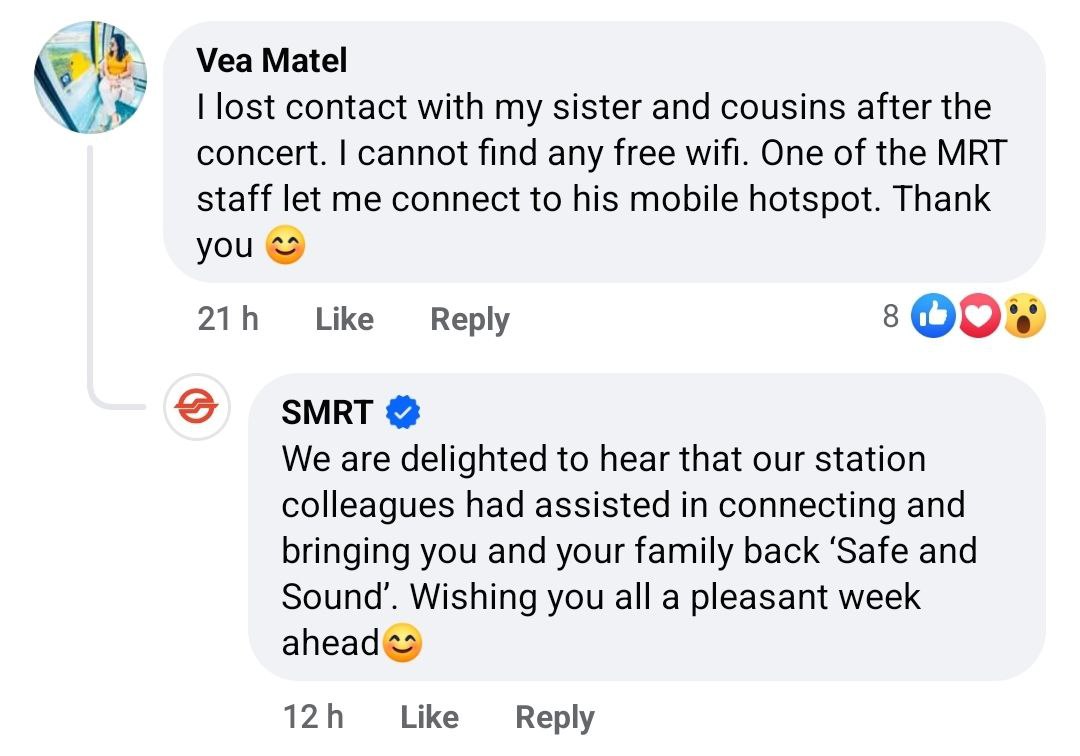
Nadarajan said that the team enjoys receiving such compliments because they serve as motivation, and signal to the staff that their efforts are recognised.
"At the end of the day, we feel a great sense of relief and satisfaction as a team when our commuters manage to board the trains safely and make their way home smoothly."
Top photo courtesy of SMRT and via Facebook screenshots
If you like what you read, follow us on Facebook, Instagram, Twitter and Telegram to get the latest updates.



